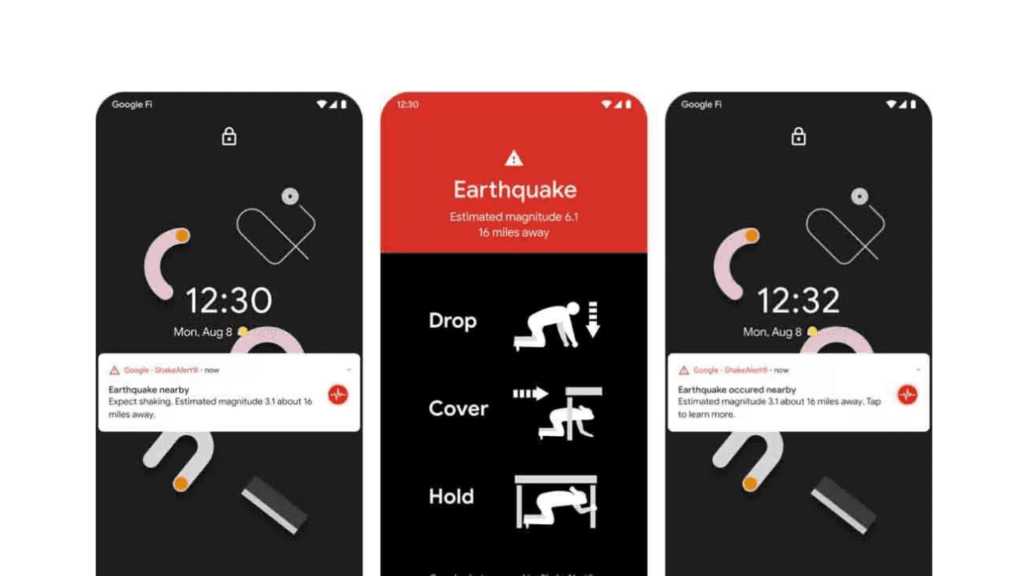In our latest news roundup, we dive into the world of AI, security, and apps. We’ll be discussing the latest updates and releases from OpenAI, exploring the ongoing battle against cybercriminals, and sharing valuable tips on how to protect yourself from spyware. Besides, we’ll keep you informed about the most recent developments in the world of apps. Stay tuned for all the details.
AI
OpenAI enables verbal conversations for ChatGPT and adds image search
OpenAI’s ChatGPT is undergoing substantial upgrades, introducing voice and image-based capabilities that mark a significant evolution in generative AI. With these enhancements, users can engage in voice conversations, request stories, or orally pose questions to ChatGPT. Furthermore, the system now supports image search functionality, allowing users to upload images for explanations or instructions. The voice feature uses a text-to-speech model, offering 5 distinct voices developed through collaboration with voice actors. OpenAI has partnered with Spotify to assist podcasters in translating their content into other languages while preserving their unique voices.

“You can now use your voice to engage in a back-and-forth conversation with your assistant. Speak with it on the go, request a bedtime story for your family, or settle a dinner table debate.” OpenAI states in its recent announcement.
OpenAI introduces DALL-E 3
OpenAI has introduced DALL-E 3, an upgraded text-to-image tool that collaborates with ChatGPT to simplify prompt creation. Users of premium ChatGPT plans can refine their image requests through conversations with ChatGPT, receiving results directly within the chat app. DALL-E 3 also enhances image quality, particularly for longer prompts, and improves handling of challenging content like text and human hands. Besides, it implements mechanisms to reduce algorithmic bias and enhance safety, rejecting requests for images resembling living artists or public figures. OpenAI plans to launch DALL-E 3 for premium ChatGPT users in October, with subsequent availability for research labs and API customers. There is no mention of a free web tool release.
Security
Stay ahead of spyware: Apple’s latest updates keep your devices safe
Have you already updated your Apple devices? If not – then you should hurry up. Apple has issued urgent security updates for various devices, including iPhones, iPads, Macs, Apple Watch, and Safari users, addressing three actively exploited vulnerabilities. These vulnerabilities involve issues with WebKit, certificate validation, and kernel access, collectively forming an exploit chain.
While the fixes follow the recent iOS 17 release with enhanced security features, Apple is currently aware of active exploitation targeting iOS 16.7 and earlier versions. These updates were prompted by the discovery of an exploit used to distribute the Predator spyware, which can steal device contents. Apple back-ported the fixes to earlier OS versions. This follows a recent zero-click vulnerability discovery involving the Pegasus spyware. Update your Apple devices promptly to stay protected.
Apps
Earthquake alerts now available on Google’s Android in India
Google has introduced its earthquake alert system for Android devices in India, developed in collaboration with the National Disaster Management Authority (NDMA) and the National Seismology Center (NSC). This system uses smartphone sensors, like accelerometers, to detect tremors and provide early earthquake alerts.

The alerts are offered in local Indian languages and come in two types: “Be Aware” for MMI 3 & 4 shaking during a magnitude 4.5 or higher earthquake and “Take Action” for MMI 5+ shaking during a similar earthquake. “Take Action” alerts bypass notification settings, including silent mode, and provide safety recommendations. Google detects potential earthquakes through Android phones, often issuing alerts seconds before shaking. To receive alerts, users need Android 5 or later, active Wi-Fi or cellular data, and location settings enabled. Google already offers AI-driven flood alerts across India.
Google to stop Gmail’s basic HTML view in 2024
Google is discontinuing Gmail’s basic HTML view, a stripped-down email interface, starting in January 2024. Users will be automatically switched to the Standard view after this date. Gmail Basic HTML view, designed for slower connections and older browsers, lacks features like chat, spell check, search filters, and keyboard shortcuts. While Google has not announced plans for a low-connectivity mode, the company is focusing on integrating AI-powered features into Gmail and enhancing its functionality. This move aligns with Google’s ongoing efforts to modernize its products and services.
Apple introduces iPadOS 17
Apple has released iPadOS 17, featuring a redesigned lock screen with widgets, improved Stage Manager for window organization, PDF Autofill, and support for external USB microphones and cameras. The lock screen now allows for customizations like wallpapers, fonts, and widgets. Interactive widgets enable tasks like setting timers and controlling smart devices. The update introduces Live Activities to monitor events like Uber Eats orders. iPadOS 17 also offers PDF autofill, digital signature support, and the Health app tailored for iPads. It supports external USB microphones and cameras for content creators. Other features include ML-powered autocorrect, live stickers, offline maps, and mood tracking. Compatible with various iPad models.
Adobe introduces a web-based version of Photoshop featuring AI tools powered by Firefly
Adobe has officially launched Photoshop for the web, exclusively for paid plan users. The web version, previously in beta for almost 2 years, now features Firefly-powered AI tools, including generative fill and generative expand. The web version streamlines workflows with a toolbar based on tasks like image reproduction and object selection, displaying full tool names for beginners.

Adobe emphasizes collaboration by enabling easy file sharing with non-subscribers. Previously beta-exclusive, Firefly-powered features are now accessible on the web version, potentially allowing faster updates and feature testing. While the web version includes most desktop tools and the contextual taskbar, it’s still missing a few features. Adobe is actively working on adding them. According to Adobe, there are still no plans to offer a free or freemium version of Photoshop on the web.










